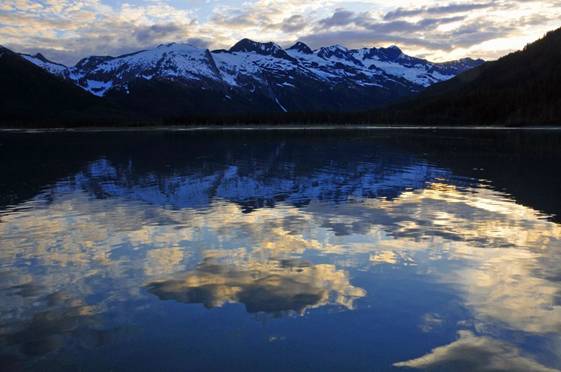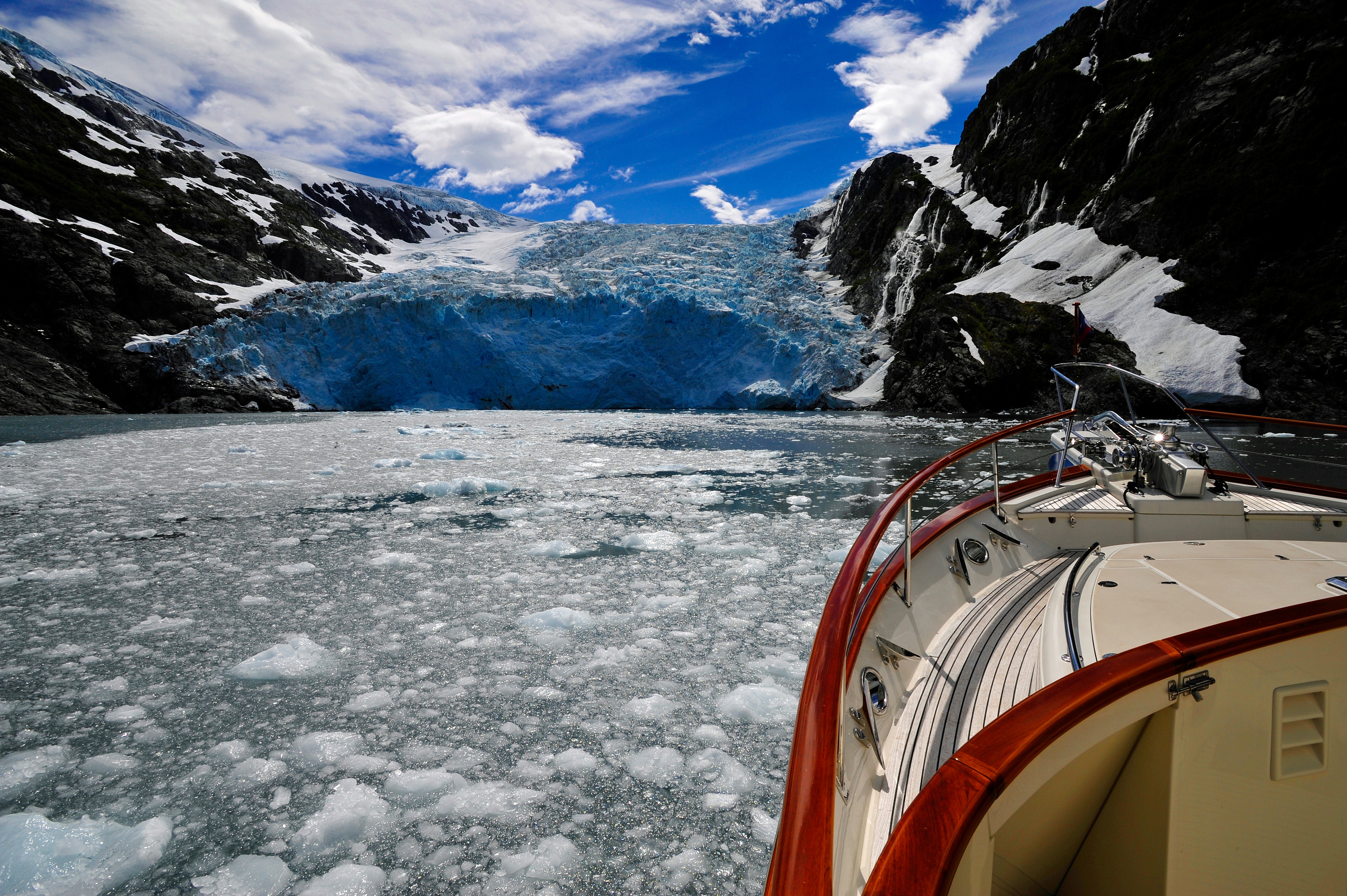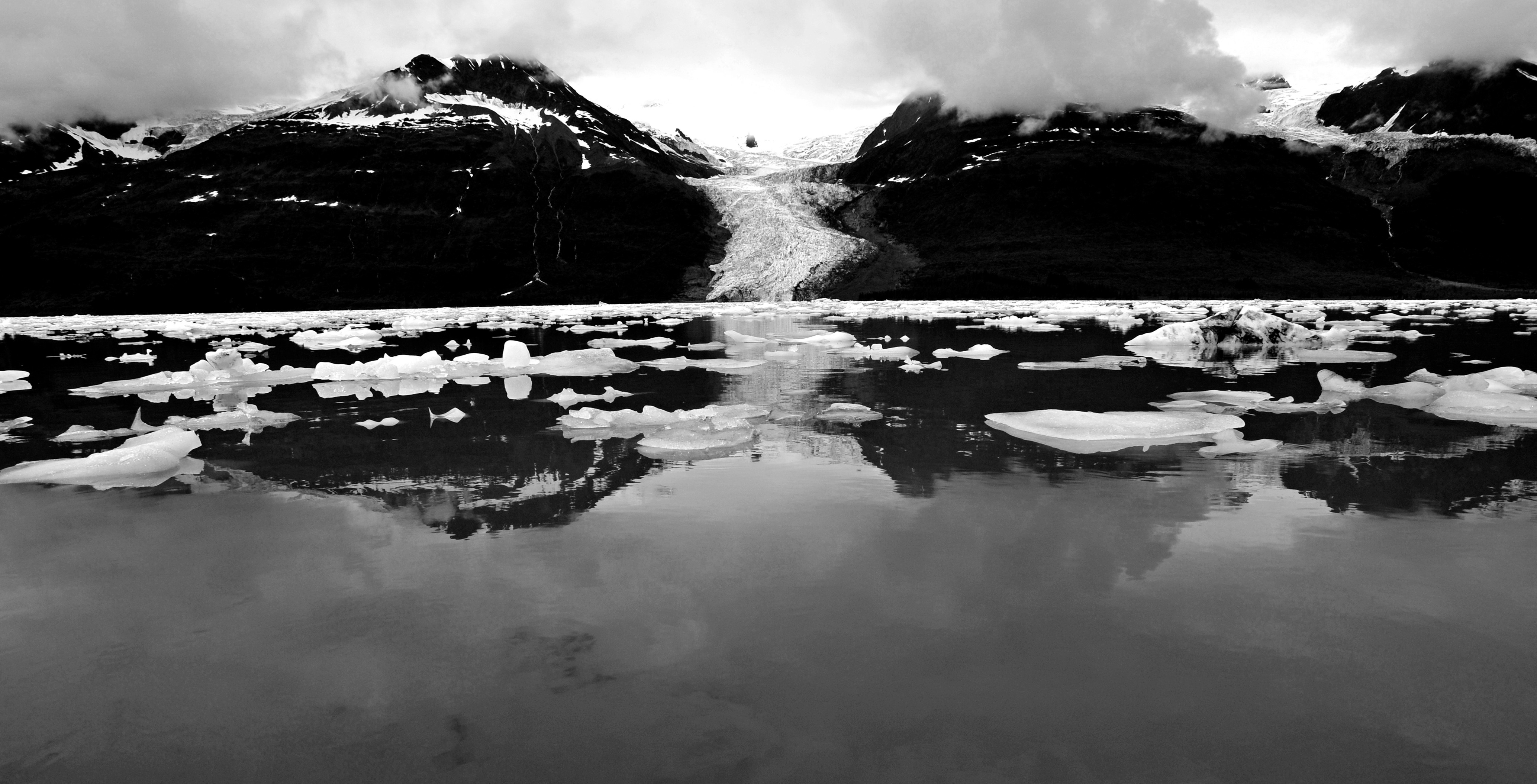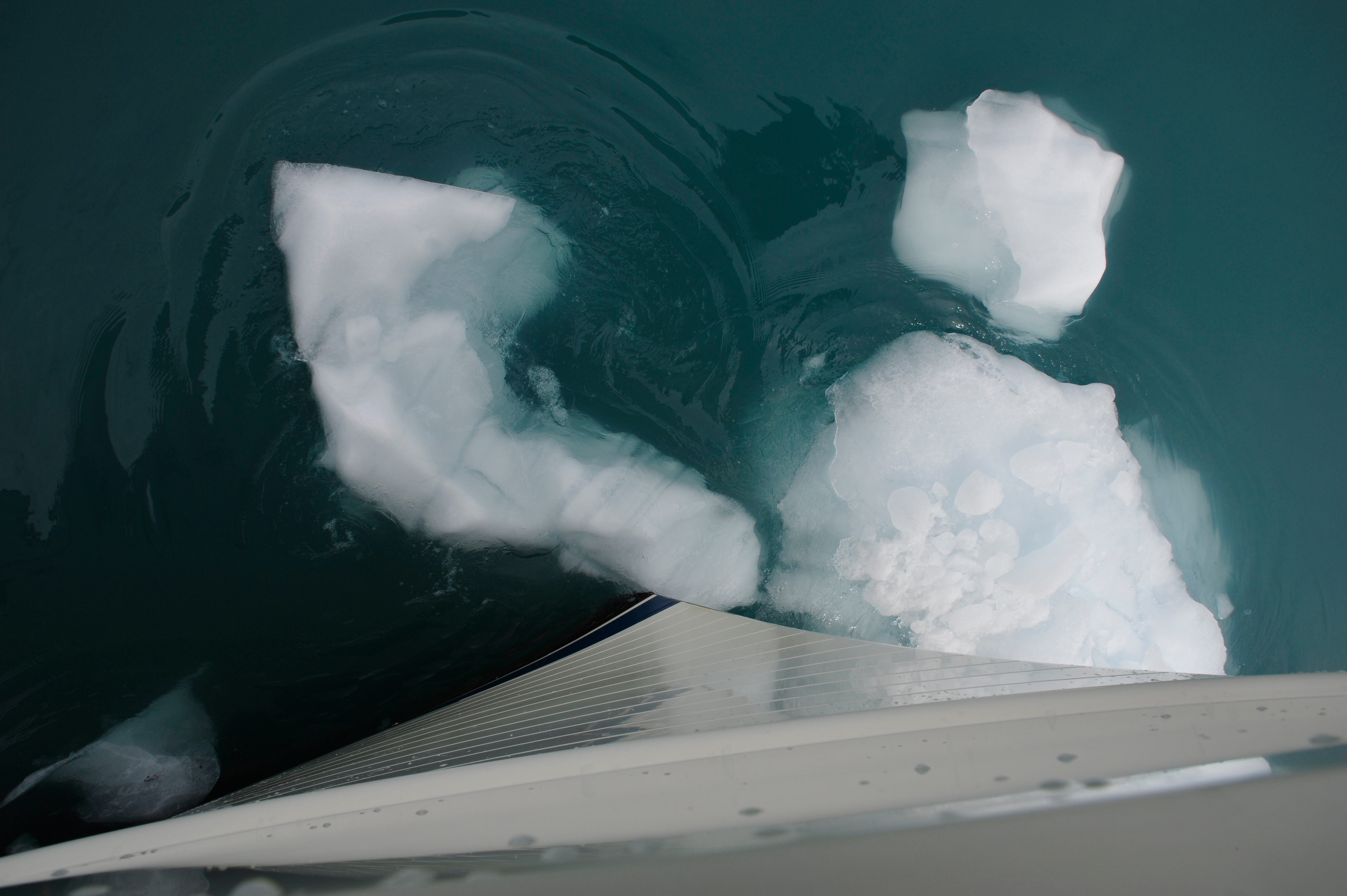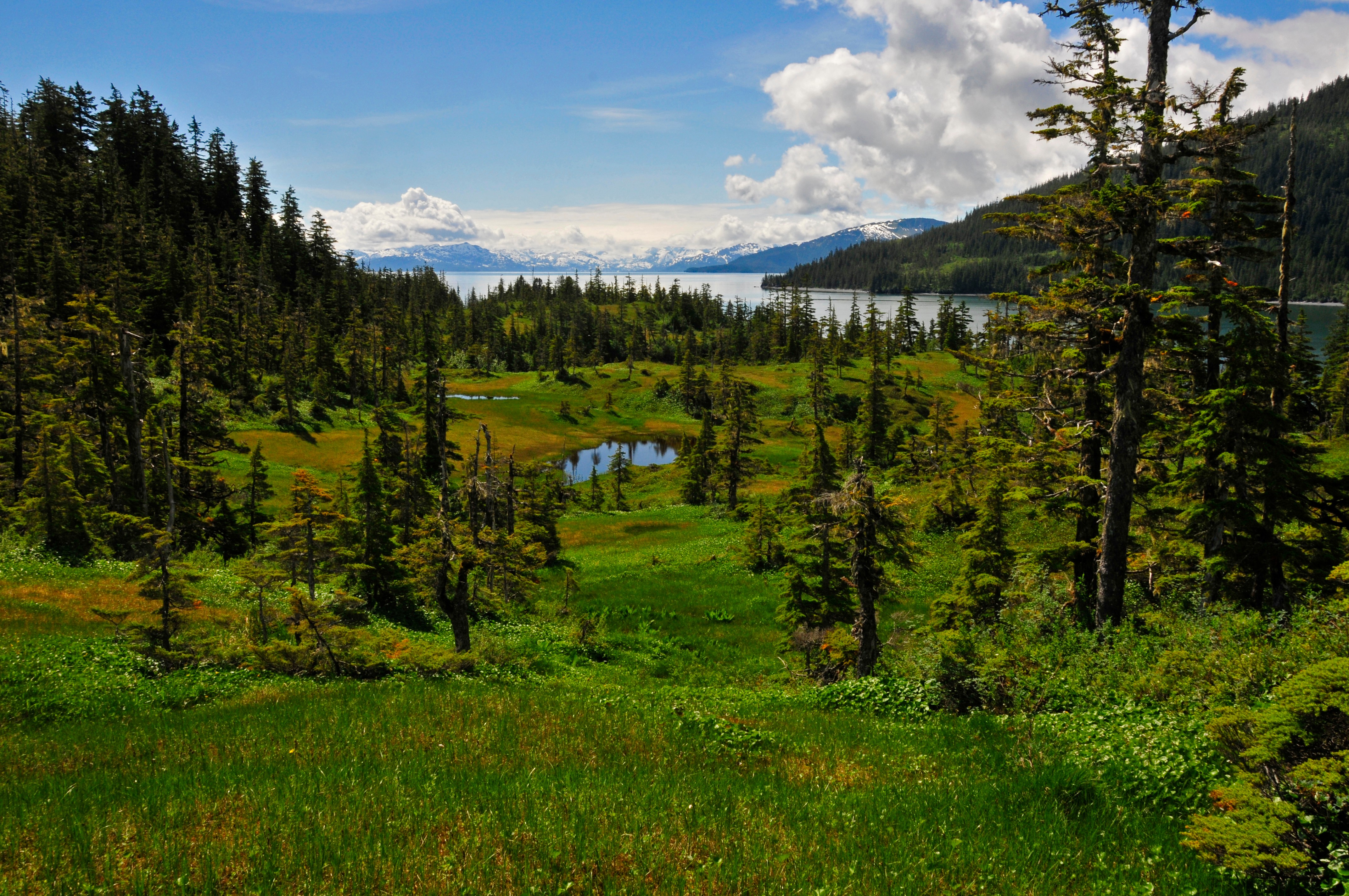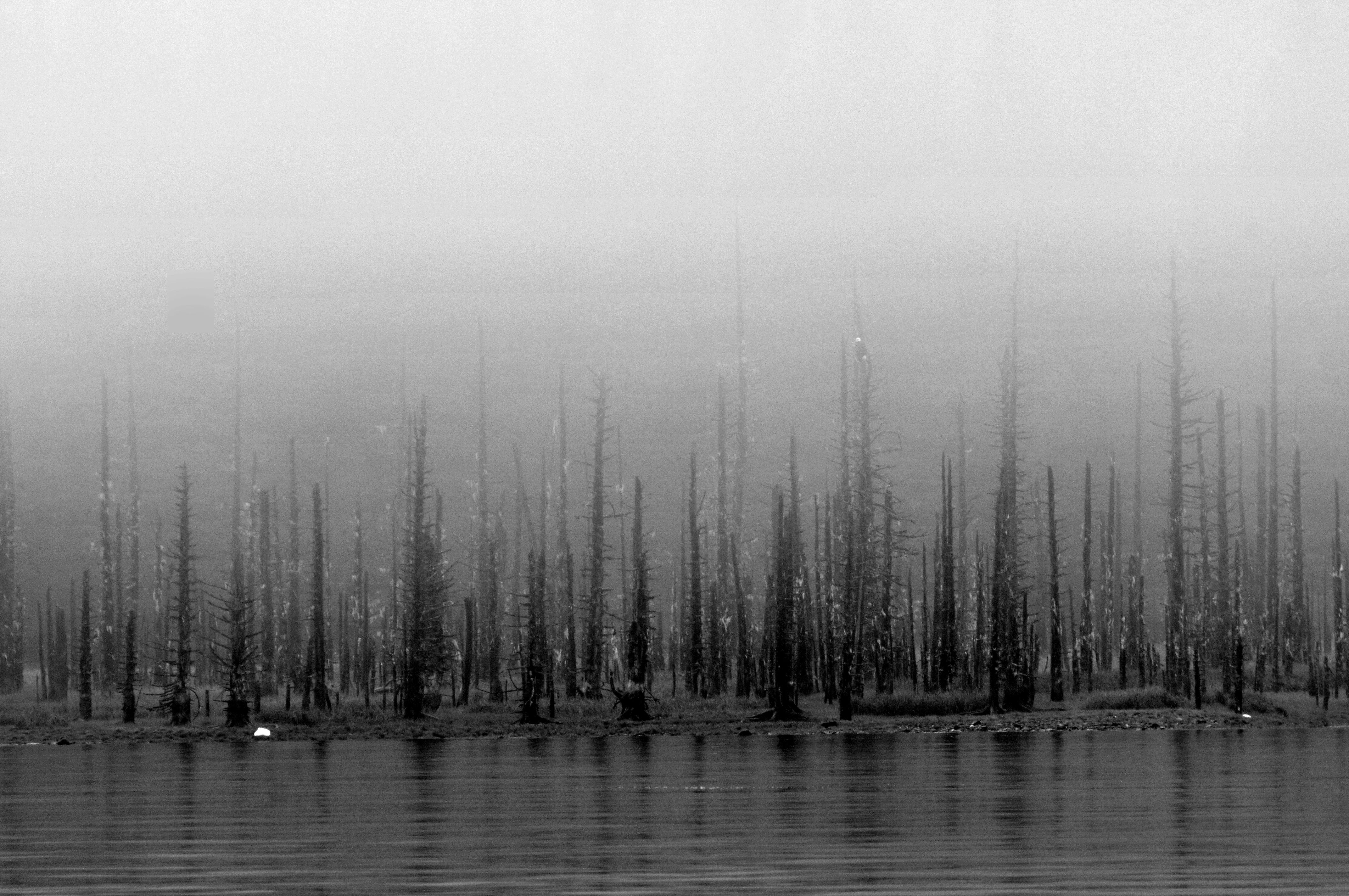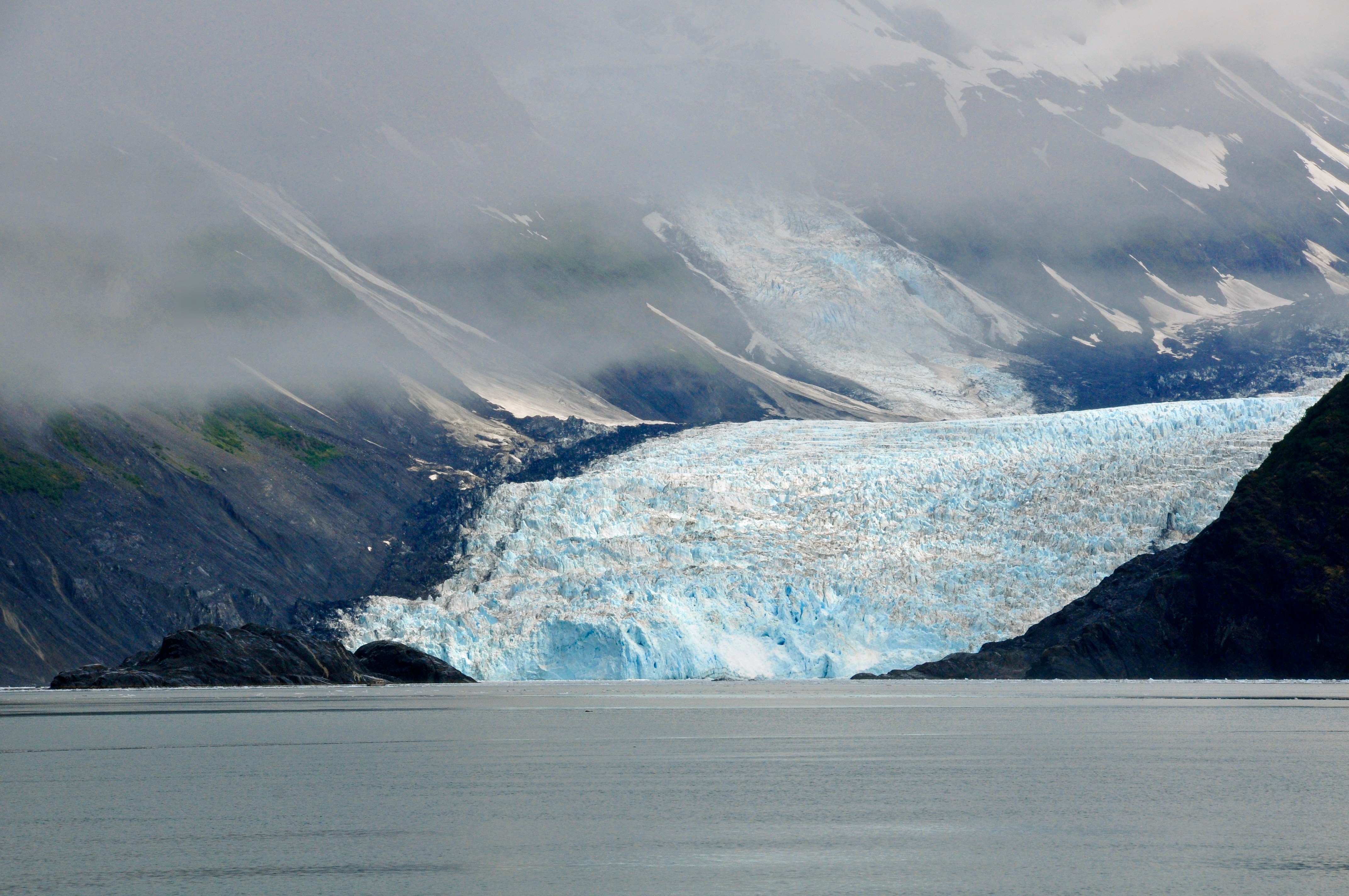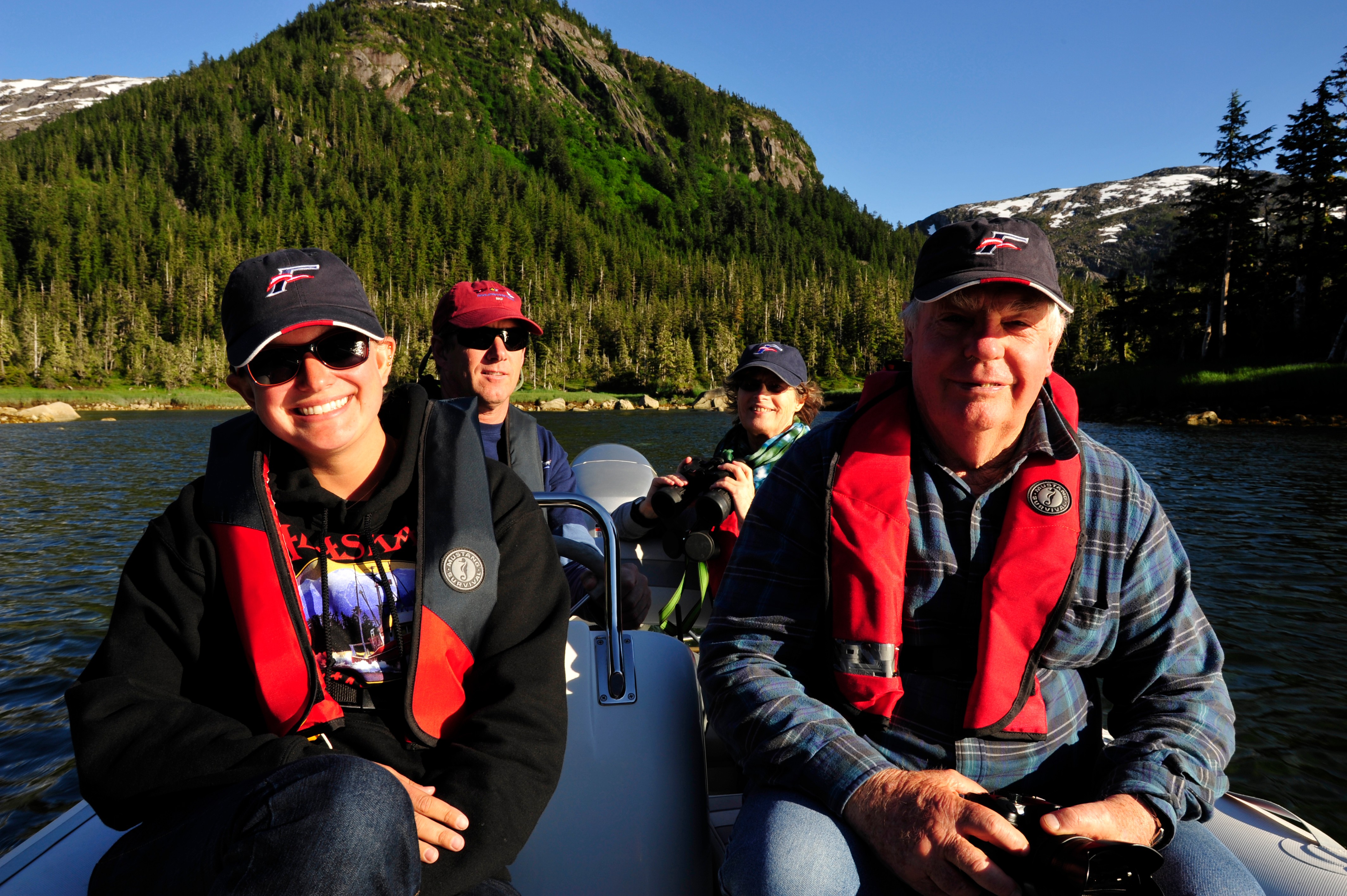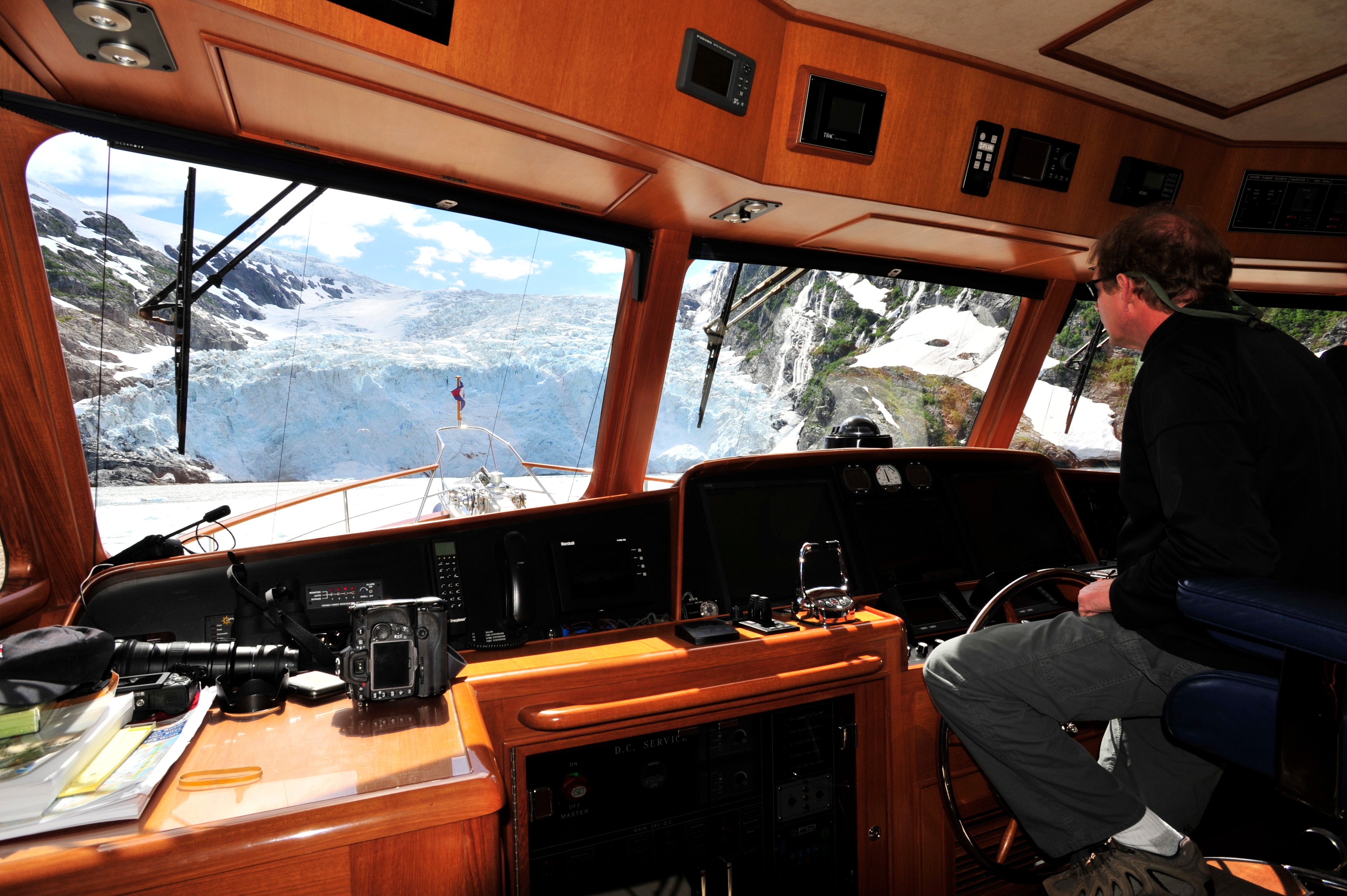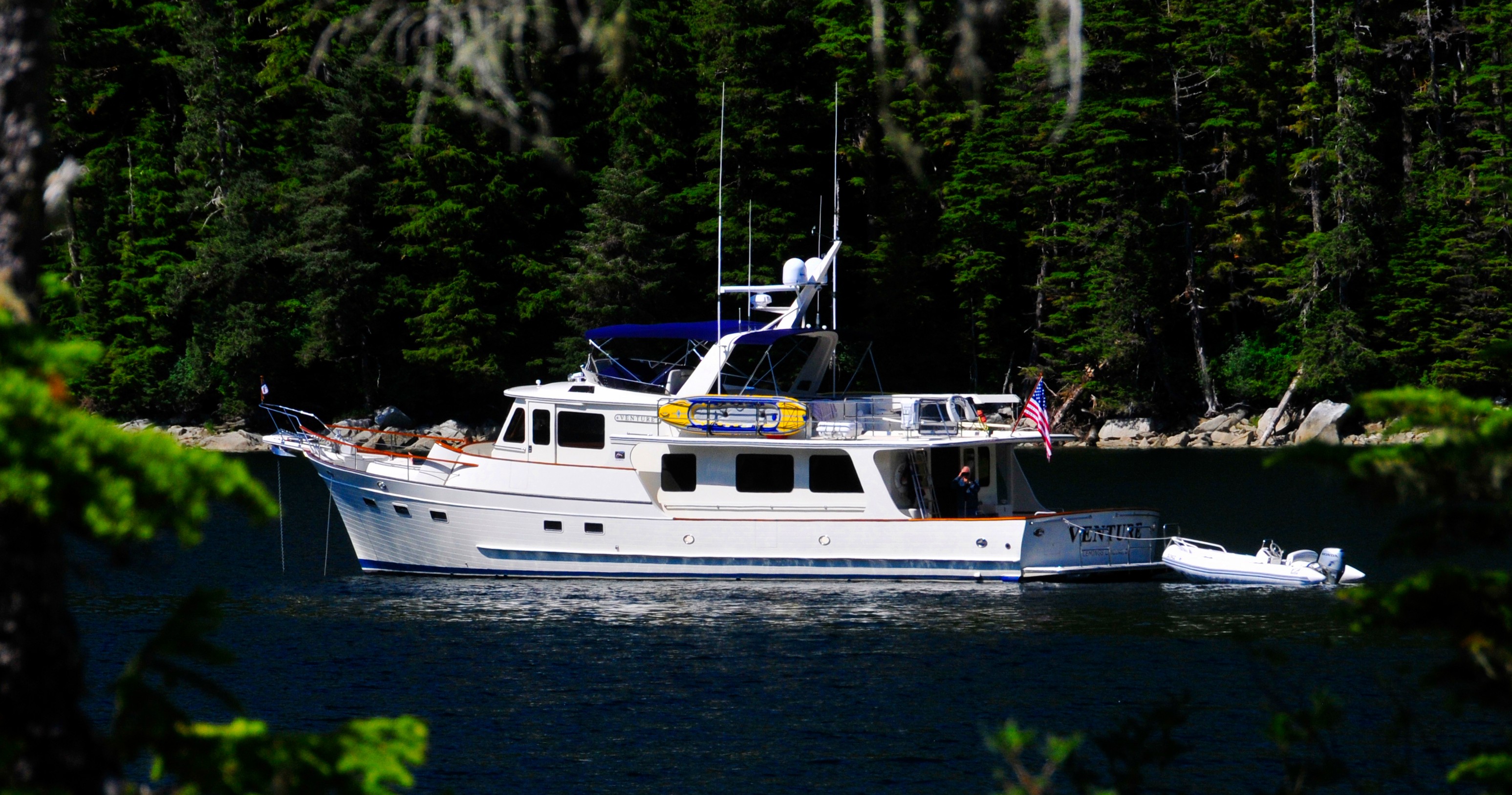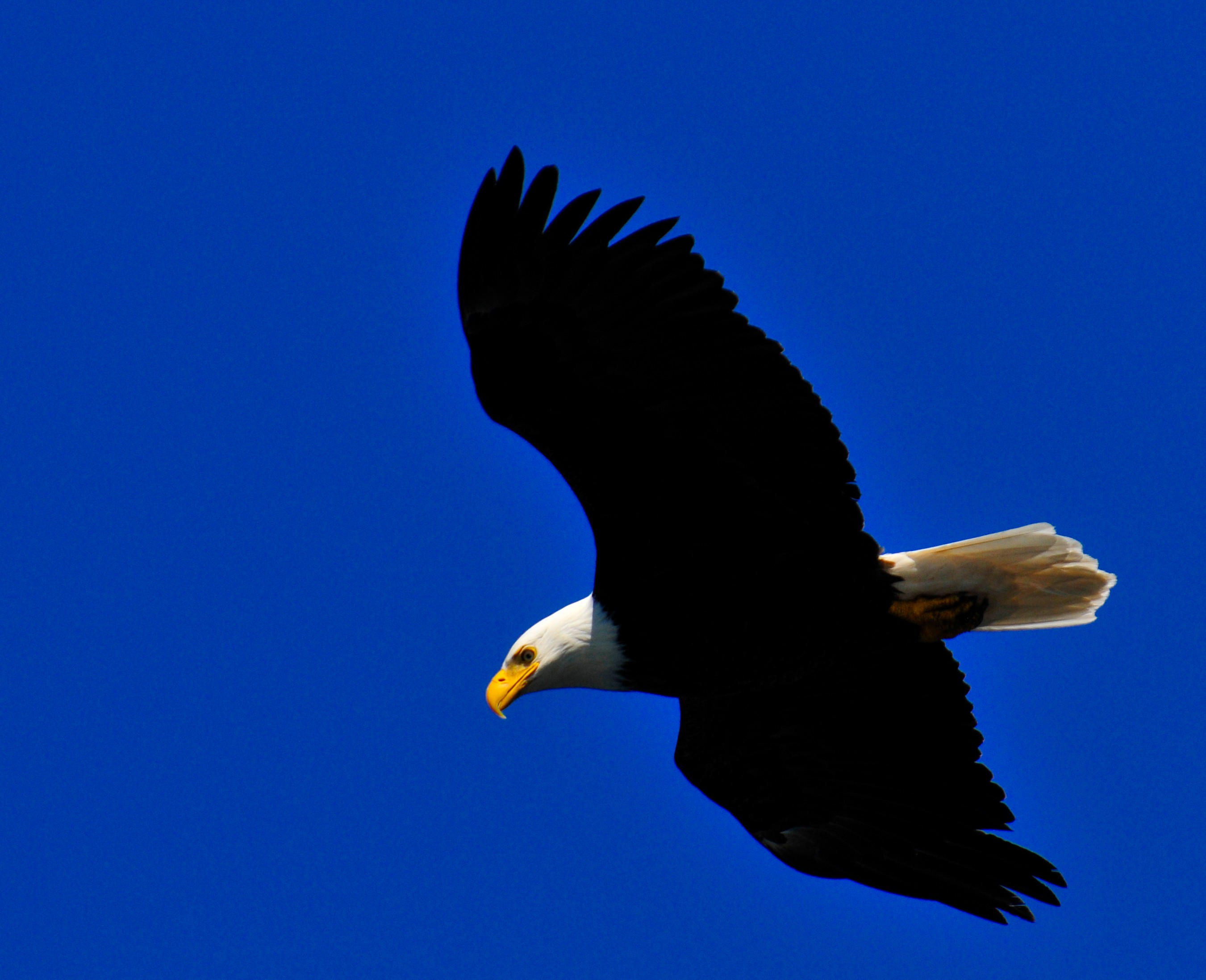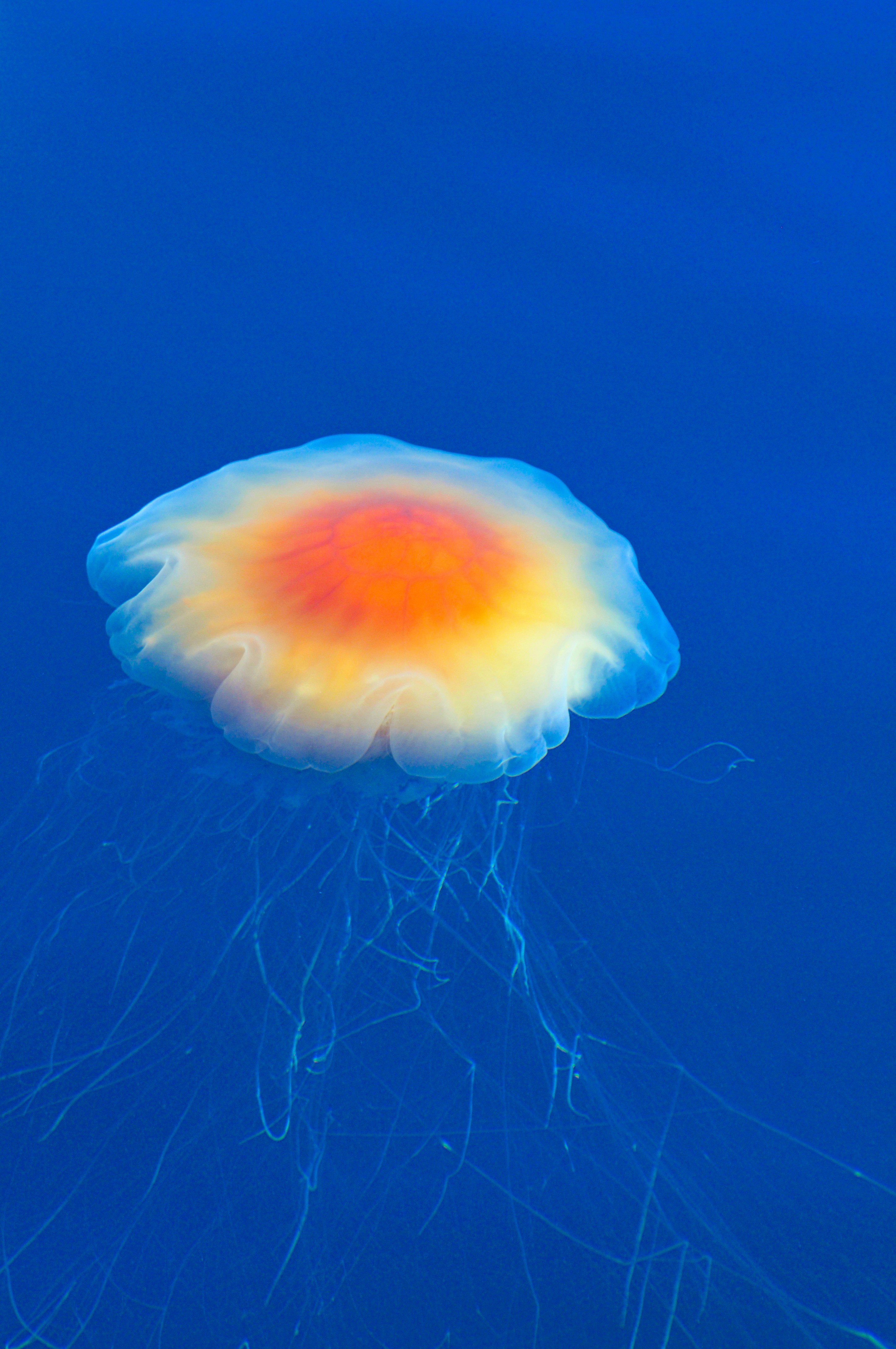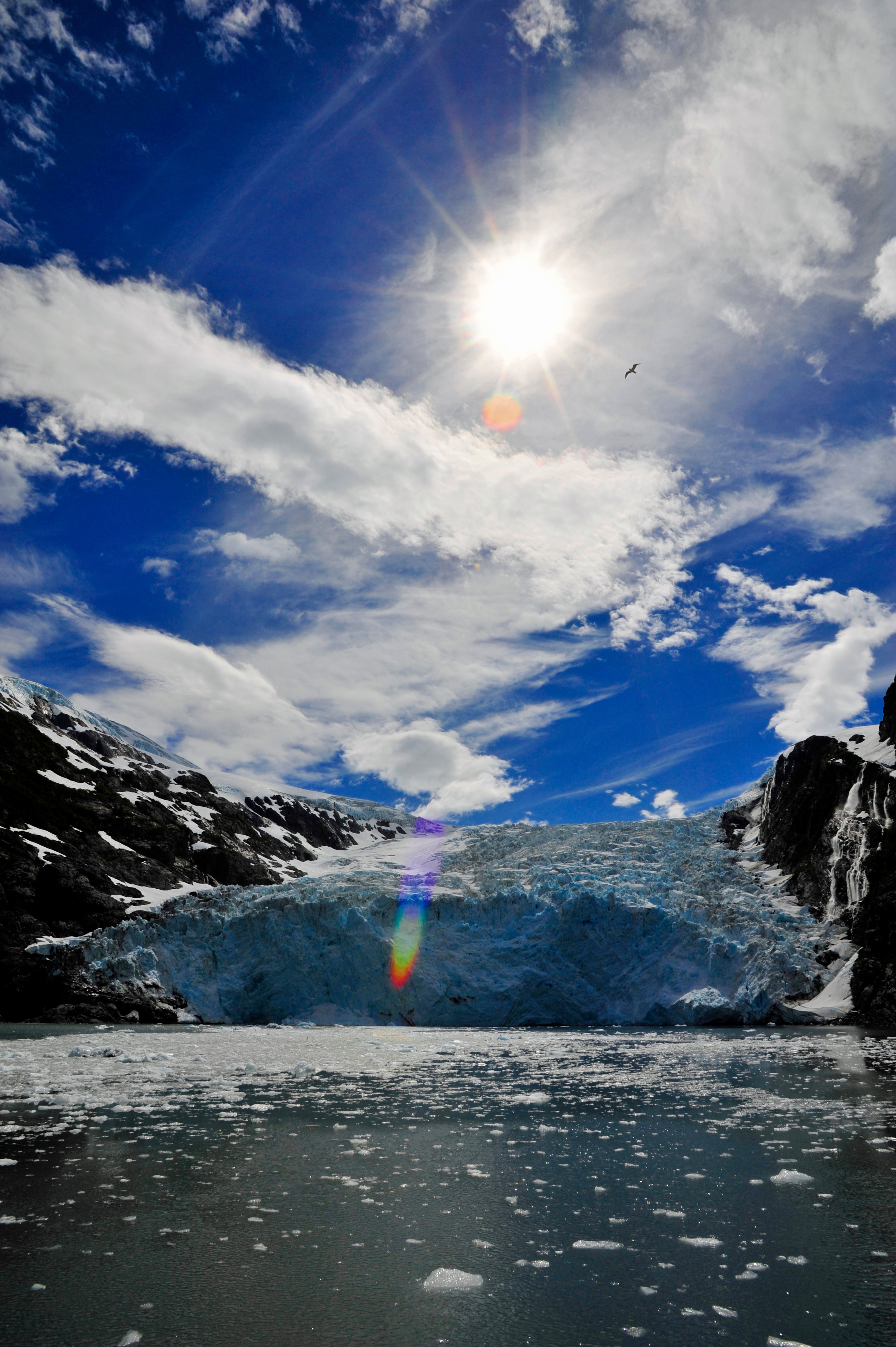Water Colors
By Steve D’Antonio
Copyright August 2013
Prince William Sound is renowned for its great natural beauty and many glaciers.
Azure, cobalt, turquoise, jade, black, emerald, slate, lead and battleship gray are but a few of the hues one might observe in the waters of Prince William Sound, over the course of just a day or two. I’ve been gazing at the sea in all its many states for much of my adult life. When asked, most cruisers will quickly point to the tropics as the most color-rich environment. While that’s true in many respects, I’m partial to high latitudes and know they hold a magic all their own where light, texture and color are concerned.
Several months ago I received an invitation from Tony Fleming, the founder of Fleming Yachts, to cruise with him aboard Venture, his own Fleming 65, in Alaska. I’ve had the good fortune to cruise with Tony in the past, and as such I had a relatively good idea what this would entail. Among other things, Tony and I share a range of interests, from vintage aircraft and WWII history to photography and a love of good books, especially old ones.
Few things are more satisfying, to me, than cruising in remote, high latitude locales. Doing so with someone who shares your passions makes these passages all the more enjoyable. For example, as a photographer I’m accustomed to those I’m traveling with looking bored, impatient and becoming downright angry as I try to capture images, usually with two or three cameras and a variety of lenses and other gear. Unless I’m traveling alone, it’s part of the territory, and I can’t say I blame those whose ire I raise to get the photos I want, if it’s not your passion it can be downright dull.
When traveling aboard Venture, however, copious photography and videography are the orders of the day, taking the boat around to revisit or line up a vista, or capture wildlife images, often multiple times, is simply commonplace. It’s a cruising style that suits me well
Alaska’s Prince William Sound
Known for its dramatic scenery, commercial salmon and halibut fishing, glaciers, fjords and water falls, as well as the ignominious Exxon Valdez grounding and subsequent oil spill, Prince William Sound is acknowledged as one of Alaska’s most beautiful regions. Weather can be fickle, however, and my visit was no exception. Flying to Anchorage and then on to Valdez via twin engine Beechcraft, fog, and rain and low clouds were plentiful. When I landed in Valdez, in a cool drizzle, I looked at clouds that ringed the bases of nearby mountains, looking much like fallen halos, and thought, ‘well, I’m in Alaska and there’s always black and white photography’. According to the crew it had been raining for the entire prior week, and the forecast was for more of the same. Fortune, however, smiled upon Venture and me, the weather improved with each passing day until, by the third day clouds became a rare sight, the temperature rose and one began to worry about sunburn.
The sheer volume of glaciers and glacier land and seascapes proved to be a feast for both the author’s senses and lenses.
Venture’s dance card was chock a block with intended destinations, many of which were the area’s plentiful and spectacular glaciers, with names like Meares (one of the few that is advancing), Harvard, Yale and Harriman to name just a few. And, with nearly 24 hour daylight, our days promised to be very full.
On one occasion, as we made our way into Unakwik Inlet, which was populated by a coterie of lazing harbor seals and otters, we were met with an ice-choked channel; it looked like something out of one of Frank Hurley’s monochrome images. The passage was thick with brash ice and the occasional growler, all of which clacked and tinkled as we edged up to the field’s perimeter.
Harbor seals were encountered with pleasing regularity, often in groups. This lone seal, however, is content to make this small ice flow his resting place.
Many of the fjords that were home to multiple glaciers were choked with ice. Venture transited these areas carefully and slowly.
Most would have contented themselves with spectacular, albeit distant and partial, views of the stately glaciers. Not Venture, she went into the ice. Slowly and deliberately her experienced captain nudged her stem into the glistening white and blue morass, gently nudging, sliding and shouldering past the myriad forms. Small stones and some large rocks rested atop and within much of the ice, some quite large. This was unnerving at best; audible and palpable thunks, clunks and thuds accompanied our movement for the better part of an hour, as I wondered how the props and rudders were holding up, not to mention the hull. The gearhead in me was thinking, ‘It’s comforting to know the Fleming’s solid hull is stout and the encased SeaTorque shafts are well-protected”. Although I never grew accustomed to it, it was a routine the crew had practiced many times without incident. As the ice parted and open water formed in a delta shape around Venture’s hull, the clearer it became that the stainless steel clad stem was doing the lion’s share of the work.
Venture’s stainless steel clad stem hardly makes her an ice breaker. Moving slowly, however, she was able to nudge even large chunks of ice that lay in her path.
Standing on the swim platform and looking forward it was surprising to see just how little ice actually touched the hull, and how hard it would be for any of it to make its way to the running gear. While there, I managed to retrieve several pieces of glacial ice for our beverages on that and subsequent evenings. Studies indicate that Alaska’s glaciers’ ice is typically about 100 years old at their termini, which means the ice cubes in my drink likely fell as snow when Woodrow Wilson was president.
Even gearheads can, however, can appreciate the surfeit grandeur and majesty of settings such as this, they are simply awe inspiring. At times, the air was so clear that it offered an atmospheric lens or conduit of sorts, one that seemingly extended over the horizon. Distant snowcapped mountains could be spied, albeit in forms that bore no resemblance to reality, looking like white topped mesas or mushrooms.
I found myself standing on the bridge wing or in the cockpit on many occasions during this all too short sojourn, agape with the shear immensity of the glaciers, snow clad peaks and deep fjords we encountered. The twisted, shattered and yet monolithic ice forms are a feast for the eyes, one could study each example for hours and never grow tired of the view. In summer melt, waterfalls, both grand and diminutive, were plentiful, many running out of and over glaciers themselves. Others, including the largest in Prince William Sound, rushed in mad fury down mountainsides, and over rock cliffs and crevasses. I could not help but wonder for how long they’ve flowed, and what effect they’d had on these lands. I’ve stood in front of da Vinci’s Mona Lisa, and Michelangelo’s David and had a similar Stendhal-like stirring, it’s difficult to describe.
With improved weather conditions, and extended twilight, evening scenes such as this became commonplace.
With no shortage of snow melt, the region’s many waterfalls flowed with vogor. Not all were as grand as this one, however.
I did go ashore on a few occasions. It looks very inviting, lush green forests, a surprisingly large number of open meadows, and abundant streams, waterfalls, snow fields and ponds. Looks, however, can be deceiving. Trekkers who go ashore in the Prince William Sound area must be fit, and prepared with waterproof foot wear, insect-proof clothing and head nets, yes head nets.
Grassy, verdant hillsides and meadows looked inviting, however, when going ashore one had to be prepared to fight off the local “wildlife”, which consisted of swarms of ravenous mosquitos.
Sea otters were Venture’s constant companion, most often seen in large groups and with young; this one eyes the author with relaxed indifference.
On one outing we went ashore in search of an abandoned gold mine, which we failed to find. A crew member packed head nets, thoughtfully, for all three of us. As it turned out it was a wise move; initially I dismissed them, heck I’m from South East Virginia, I know how to handle mosquitos, and I’d never worn a head net. I soon ate my words, the mosquitos were ravenous and relentless, I was scratching and bloody on all exposed areas of skin, and eventually resorted to jamming my hands into my pockets to protect them from further attacks. Within half an hour we all donned head nets and weren’t the least bit self-conscious about our less than dignified appearance.
Ghost forests are one of the region’s more enchanting sights. Formed by the great 1964 earthquake, wherein large sections of Prince William Sound coastal zones dropped several feet, “drowning” the trees and ultimately killing them. Can you spot the bald eagle in this image?
The meadows that looked like grass from a distance were in fact bog, which I did expect. Their level of saturation, however, was impressive, each step resulted in a puddle forming around one’s foot, which developed a powerful suction when the foot was lifted. I’m ashamed to say I’d brought low quality, light weight hiking boots in a bid to save weight, as I was headed directly to China after this trip and had to pack for two climate extremes. The wisdom of this decision was tested within the first fifteen minutes of the first hike. Each time I lifted my right foot I heard and felt a secondary ‘shclump’. I investigated and realized the sole was beginning to separate from the upper. Within another ten minutes both soles had completely separated, I could actually see my socks and needless to say my feet were soaking wet. Note to self; don’t scrimp on hiking boots. This pair never left Alaska, ending their short life in a dumpster in Whittier.
Glaciers at once offer the appearance of movement and solidity, like a river fixed in time.
Three ingredients made this a memorable passage. First, and this should be obvious to anyone who has cruised as more than just a couple, the crew chemistry was ideal. As I mentioned earlier, Tony is a delightful person to spend time, and converse with, he has had an exceptionally broad range of experiences, and he’s worked in the marine industry for over fifty years. Venture’s captain, Chris Conklin, a New Yorker by birth but a California resident in every sense of the word, is easy going and congenial. He’s served aboard Venture for years and makes everyone feel welcomed. Christine Edwards, Venture’s resident naturalist and guide for this passage, is a consummate researcher, birder and wildlife enthusiast, as well as an accomplished steward (she’s the one who brought the head nets, for which I’m eternally in her debt). No destination was ever selected without first hearing her thoughts. Finally, Kaylin Coleman, a recent college graduate and Venture’s intern, deck hand and would be captain was energetic, cheerful and helpful even when it meant assisting in setting an anchor, several times, in a cold, pelting rain. The atmosphere was always warm and congenial, even though I was an interloper of sorts, the other three having cruised together since their departure from California months earlier.
Venture’s crew explores an anchorage, virtually every one of which she had to herself.
Second, Venture’s galley and larder were well stocked with tasty and healthy food, which Christine watched over carefully. Meals were simple but solid and always very good. And, for a grazer like me, snacks and a variety of tea (Venture is equipped with an instant hot water supply at the galley sink, an invaluable appliance) were plentiful.
Maneuvering adjacent to glaciers must be done cautiously. Because of their recession, the areas at their termini are often uncharted.
Third, Venture is an ideal cruising vessel, particularly for this type of passage. She was more than comfortable for our crew of five, she has a good motion in a seaway, is well found, well-equipped and impeccably maintained. Often, when I’m asked to cruise under these conditions, I’m prepared for some problem solving and impromptu repair work (I enjoy it and feel as if it’s my way of contributing, I can’t cook, after all). In the eight days I was aboard Venture she had but one memorable failure, and much to my chagrin I was unable to affect a repair. The LP gas line for the BBQ somehow became clogged, gas flowed out of the tank, and into the line, but it stubbornly refused to flow out. I had volunteered to grill the steaks that night, however, I reluctantly relinquished the task to Tony who prepared them in the ship’s galley, and they were delicious.
Venture has the right attributes for cruising in remote regions and high latitudes, she’s comfortable, well heated and can be self-sufficient for long periods.
Technically Speaking
From a technical perspective, passage making of this sort demands a certain level of attention to detail for both the crew and the vessel. Far from home and assistance, she has to be as self-sufficient as possible. Tools and spares are, of course, critical, and Venture is well stocked in both areas.
The waters here are protected and while the weather was inclement at times, there was very little in the way of wind. Overall, the conditions were benign, however, that too can be deceiving and conducive to a false sense of security. Anchoring can be very challenging indeed and one must resist the temptation to accept anything other than a secure set, it sometimes took three tries, and in at least one case the anchorage had to be abandoned all together. Wind direction changes and is often funneled off of mountains and through passes, amplifying its effect, making it all the more necessary to back boldly against an anchor to test its security.
Eagles made occasional appearances, however, less frequently than one would have thought. This one did a flyover to inspect his inlet’s new resident.
Venture is well suited for remote and high latitude passages. For cooler climes she’s equipped with a hydronic, diesel-fired furnace that does not require the use of the generator, making for both a peaceful and warm cabin, as well as an abundant supply of domestic hot water (of course she has a a water maker as well). Additionally, she’s equipped with a domestic hot water circulation system that negates the need, and the waste, to run the tap until it’s hot.
Several areas were heavily populated with jelly fish like this one. Clear water made it possible to see them in all their foreboding glory.
As mentioned previously, Venture is also equipped with a SeaTorque shaft system, which was retrofitted a few years ago; it utilizes a thrust bearing and oil-filled, roller bearing-equipped shaft tube. It’s a product I have studied and written about in the past, Venture II, the vessel on which I travelled to Iceland in 2010, was similarly equipped. The result is an extremely smooth ride and no worries about engine to shaft alignment, ever, thanks to the unit’s heavy duty universal joints.
Thanks to clear air and low humidity, when the sun did shine, it made for spectacular land and icescapes.
What is perhaps most notable about Venture is how well she carries her age and the miles that have passed under her keel. She’s travelled from the Chesapeake Bay to the West Coast, with an excursion to the Galapagos, and to Alaska twice, traveling over 40,000 nm, over the course of seven cruising seasons. As I perused her decks, cabins and engineering spaces with a critical eye, I was hard pressed to find evidence of this volume of heavy use. I’ve often said, well-designed, well-made vessels age very well, and Venture is no exception.
For more information on the services provided by Steve D’Antonio Marine Consulting, Inc. please e mail Steve at info@stevedmarineconsulting.com
or call 804-776-0981

